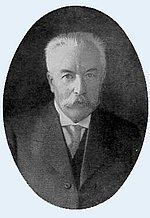HSP - A LONG "STORY"
History of the Disease
In 1880 the neurologist, A. Struempell from Heidelberg, described the pattern of the disease that was later to be named after him. He had observed a gait disorder and spasticity in both legs in the case of two brothers. As the father shared the same symptoms, a hereditary illness was suspected.
After the death of both brothers in advanced years, Strümpell was able to prove from the autopsy what he had already suspected on account of the symptoms: the motor nerve fibres in the spine (cortico-spinal tract) had degenerated. Struempell described similar cases at a later date but could not discover the cause of this degeneration
Names of the Disease
The French medics Lorrain and Charcot made identical discoveries which explains why the disease was initially known by the following names:
- Struempell's disease
- Struempell- Lorrain disease
- Erb- Charcot disease
later the following designations were used in addition:
- Spastic Spinal paralysis
- Diplegia spinalis progressiva
- Spastic Paraplegia
It is from these designations that the abbreviations popularly in use today are partially derived. Here the English designations have established themselves.
- FSP = Familial spastic paraplegia
- HSP = Hereditary spastic paraplegia
- SPG = Spastic paraplegia
- SSP = Spastic spinal paralysis




